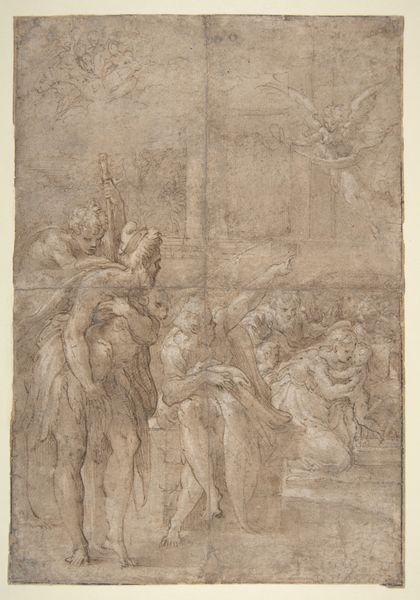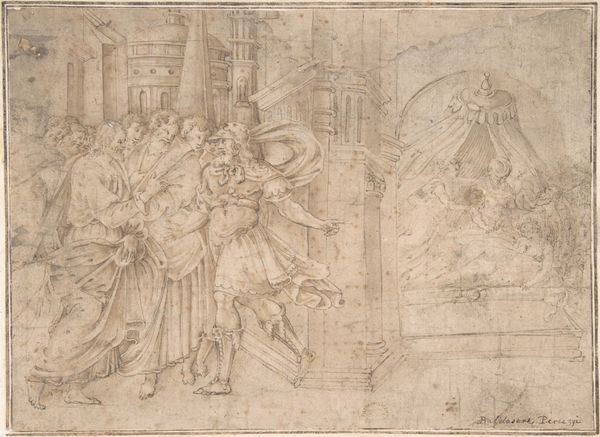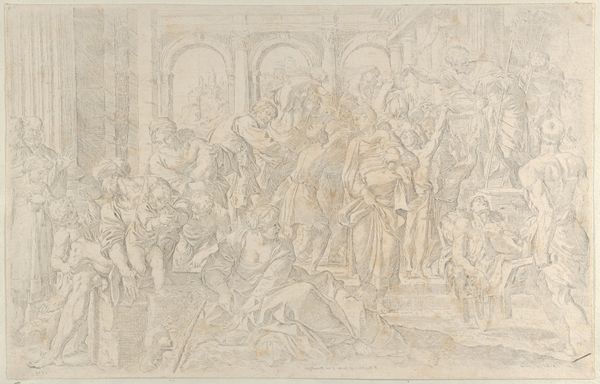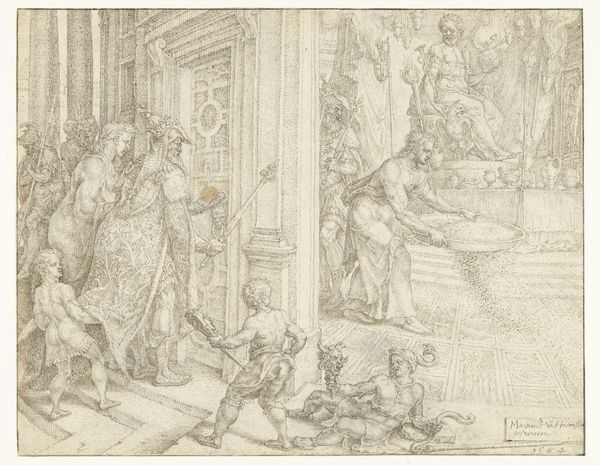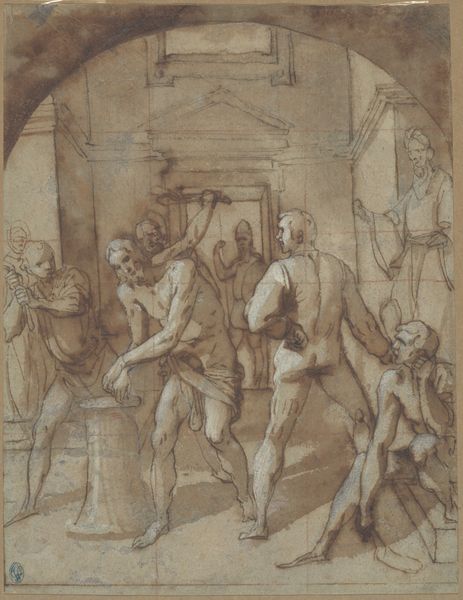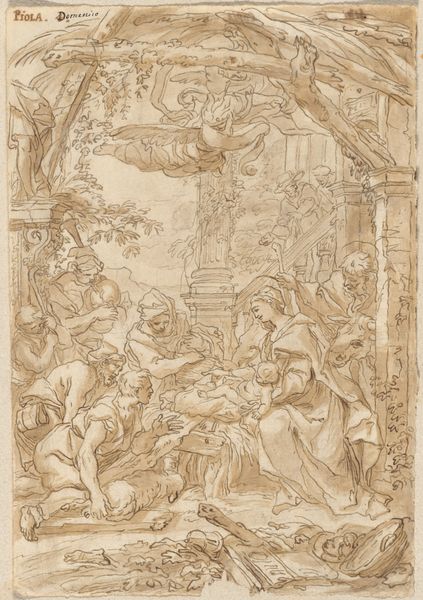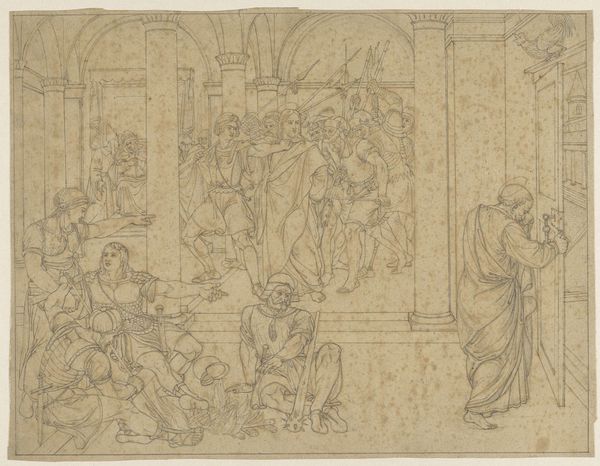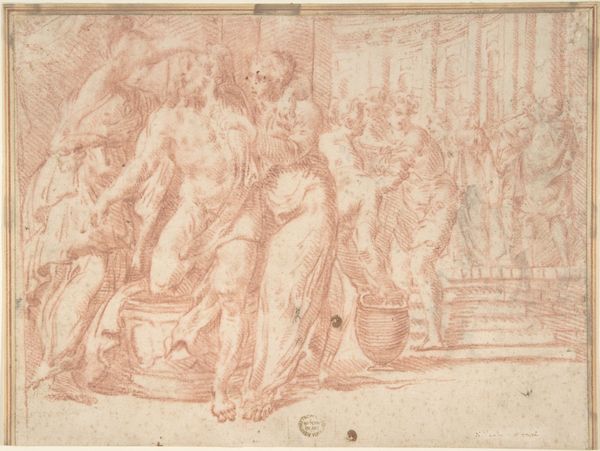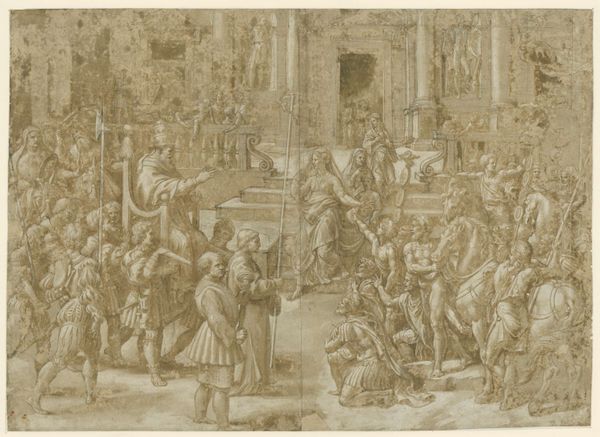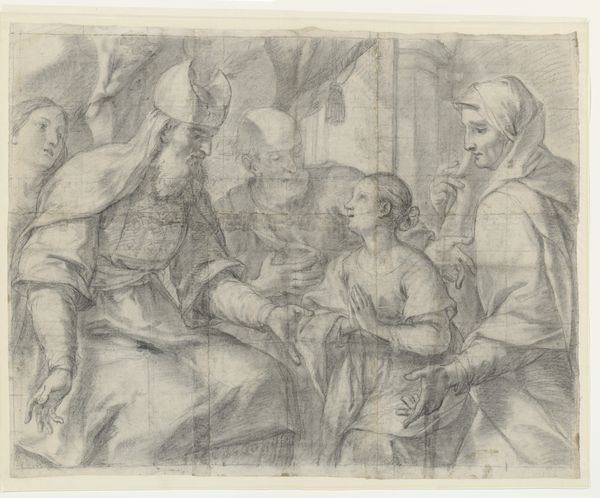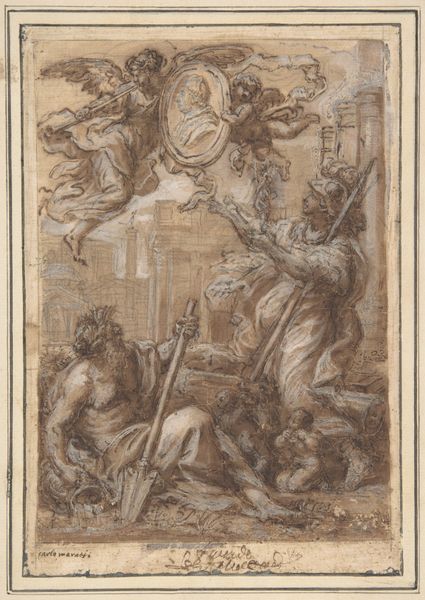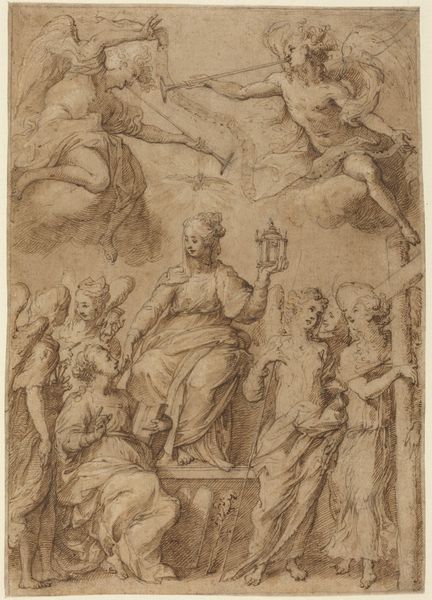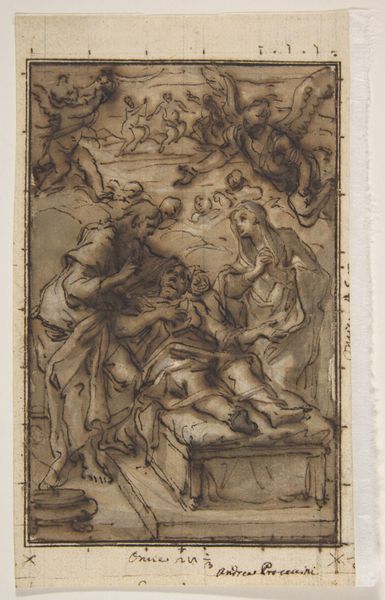
The Martyrdom of St. Catherine of Alexandria 1560 - 1570
0:00
0:00
drawing, print, pen, charcoal
#
drawing
#
toned paper
# print
#
charcoal drawing
#
figuration
#
11_renaissance
#
coloured pencil
#
pen
#
charcoal
#
history-painting
Dimensions: Sheet: 8 7/8 × 8 9/16 in. (22.5 × 21.8 cm)
Copyright: Public Domain
Editor: This drawing by Carlo Portelli, "The Martyrdom of St. Catherine of Alexandria," made sometime between 1560 and 1570 using pen, charcoal, and colored pencil on toned paper… it's really intense. You get this chaotic feeling from the composition, all these figures in motion. How do you interpret this work? Curator: Well, seeing this drawing through a contemporary lens, I’m immediately struck by how it visualizes power and resistance. We see St. Catherine, a woman of intellect and conviction, facing state-sponsored violence for her beliefs. Consider the period this was created: the Counter-Reformation. Dissent, especially from women, was brutally suppressed. What does the artist seem to be emphasizing? Editor: The sheer brutality, maybe? Everyone is in such a dramatic pose; it almost feels performative, theatrical. Curator: Exactly. And that theatricality itself can be read as a form of resistance. St. Catherine’s martyrdom wasn’t just a historical event, but a powerful symbol of female defiance against oppressive patriarchal structures. Think about how her intellectual prowess challenged the established order, and how that resonates even today. Do you notice how the male figures are positioned around her? Editor: Yes, they all seem to be acting out, writhing, almost posing…versus St. Catherine herself, who looks…almost serene? Curator: Precisely. That juxtaposition highlights the power dynamics at play. The drawing isn't simply about religious martyrdom; it's about the clash between intellectual freedom and oppressive authority, a theme incredibly relevant to our contemporary discussions on gender, power, and social justice. Editor: I hadn’t considered that. So it’s not just a historical depiction, but a commentary on power structures? Curator: Absolutely. And understanding the historical context, particularly the subjugation of women and intellectual dissent, enriches our understanding of its enduring message. Editor: That gives me a lot to think about. Thanks for providing that background, I can see how history is never just ‘history’. Curator: Indeed. Art constantly holds up a mirror to power, inviting us to reflect on our own positions within these historical narratives.
Comments
No comments
Be the first to comment and join the conversation on the ultimate creative platform.
